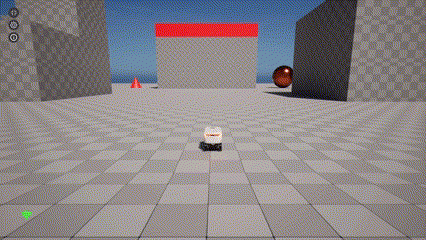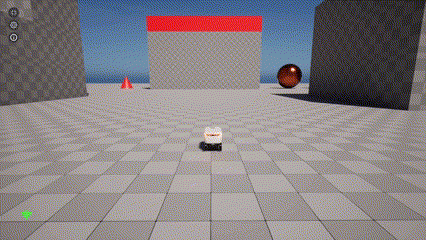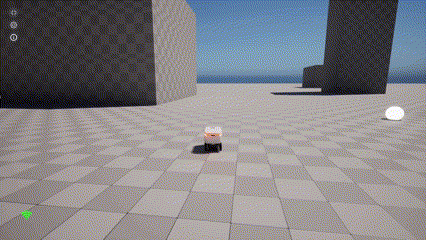This tutorial guides you through the process of controlling vehicles in the AirGen simulation environment. You’ll learn how to initialize a car, access its state, and apply various control commands including forward movement, steering, reverse, and braking.
Notebook for this example can be found: Here Getting Started
First, let’s initialize an AirGen car object. This is your entry point to controlling vehicles in the GRID platform.
from grid.robot.wheeled.airgen_car import AirGenCar
airgen_car_0 = AirGenCar()
AirGenCar class provides an interface to the underlying vehicle simulation.
Basic Car Control
After initializing our car, we need to import the AirGen library and access the car’s current state. We’ll then disable automatic speed control to manually control the vehicle.
import airgen
import time
# Get current car state
car_state = airgen_car_0.client.getCarState()
# Disable automatic speed control
airgen_car_0.client.enableCarSpeedControl(False)
CarControls object and set properties to control the car’s movement:
# Create control object
car_controls = airgen.CarControls()
# Set throttle (range 0-1) and steering (range -1 to 1)
car_controls.throttle = 0.5 # 50% throttle
car_controls.steering = 0.0 # Straight ahead
# Apply controls to the car
airgen_car_0.client.setCarControls(car_controls)
print("Going forward...")
# Let car drive for 3 seconds
time.sleep(3)
# Stop the car by setting controls back to default
print("Stopping...")
airgen_car_0.client.setCarControls(airgen.CarControls())

Steering Control
Let’s explore how to steer the car while moving forward:
# Go forward + steer right
car_controls.throttle = 0.5 # 50% throttle
car_controls.steering = 1 # Full right turn (range is -1 to 1)
airgen_car_0.client.setCarControls(car_controls)
print("Going forward, steering right")
# Let car drive for 3 seconds
time.sleep(3)
# Stop the car
print("Stopping...")
airgen_car_0.client.setCarControls(airgen.CarControls())
The steering value ranges from -1 (full left) to 1 (full right), with 0 representing straight ahead.

Reverse Operation
To move the car in reverse, we need to set the gear to manual and select reverse:
# Go in reverse
car_controls.throttle = 0.5 # 50% throttle
car_controls.is_manual_gear = True # Enable manual gear selection
car_controls.manual_gear = -1 # Set to reverse gear
car_controls.steering = 0 # Straight ahead
airgen_car_0.client.setCarControls(car_controls)
print("Going reverse...")
# Let car drive for 3 seconds
time.sleep(3)

Applying Brakes
Finally, let’s see how to apply brakes to stop the car:
# Apply brakes
car_controls.is_manual_gear = False # Change back to automatic gear
car_controls.manual_gear = 0 # Reset gear selection
car_controls.throttle = 0 # No throttle
car_controls.brake = 1 # Full braking (range 0-1)
airgen_car_0.client.setCarControls(car_controls)
print("Applying brakes...")
# Let brakes work for 3 seconds
time.sleep(3.5)
# Release the brakes
car_controls.brake = 0
Car Control Parameters
The CarControls object supports several parameters:
| Parameter | Range | Description |
|---|
| throttle | 0 to 1 | Controls acceleration (0 = no throttle, 1 = full throttle) |
| steering | -1 to 1 | Controls turning (-1 = full left, 0 = straight, 1 = full right) |
| brake | 0 to 1 | Controls braking (0 = no brake, 1 = full brake) |
| handbrake | boolean | Applies the handbrake when set to True |
| is_manual_gear | boolean | Enables manual gear selection when True |
| manual_gear | integer | Gear selection (-1 = reverse, 0 = neutral, 1+ = forward gears) |




